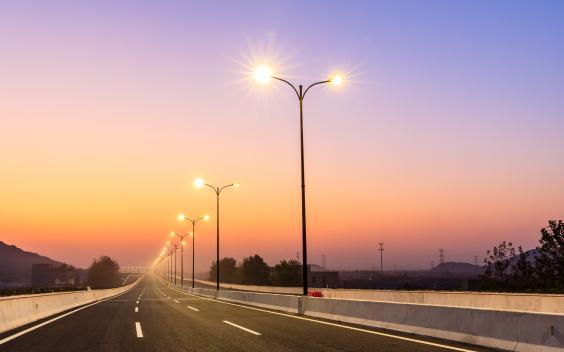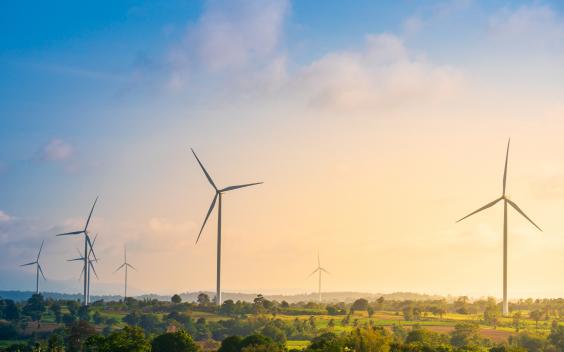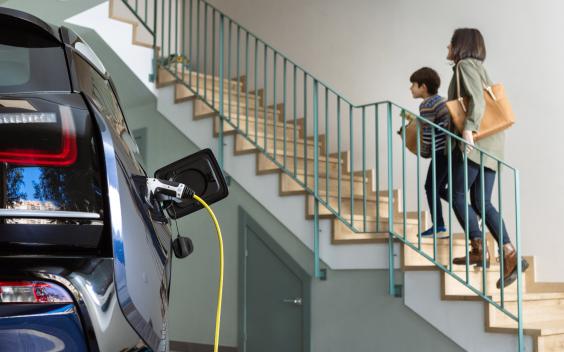Energy Transition
A smart electricity grid, better supported by renewable energies.
The energy transition is the process of changing the energy system, gradually replacing traditional energy sources, such as fossil fuels in large power stations, with renewable sources distributed anywhere on the grid and more sustainable, such as solar, wind and hydroelectric power. This transformation is driven by the need to reduce greenhouse gas emissions, improve energy efficiency, increase energy security and reduce Portugal's dependence on external energy sources. The energy transition can only be realised with a smart grid that senses flows in the network at all times.
For a greener tomorrow
The energy transition is essential in the response to climate change. It is therefore a priority for E-REDES, which is investing:
- In intelligence, resilience, automation and sensorisation.
- In new planning and management tools.
- In sharing data with stakeholders, with the aim of achieving a full and fair energy transition.
The National Energy and Climate Plan 2030 predicts that by 2030 the country will have 85 per cent of its electricity produced from renewable energy sources. The energy system will be highly decarbonised, decentralised and digitalised, based on smart grids and a new form of energy distribution.
The 5 cornerstones of the energy transition
Consumers connected to E-REDES can produce their own electricity locally from a renewable energy source such as a solar panel. The energy produced can be consumed locally, stored, sold or shared as collective self-consumption or as part of a renewable energy unit (REC). The electricity grid is the key element and facilitator that allows the sharing and sale of energy produced, the reduction of electricity bills and the reduction of the carbon footprint.
At the end of 2023, more than 191,000 self-consumption installations were connected to the distribution network, totalling an installed capacity of 1.33 GigaWatts. <

The installation of LED luminaires in the national public lighting network began in 2016. Since then, electricity consumption has fallen by 384,000 MWh, which has saved municipalities more than 40.5 million euros on their electricity bills. Today, municipalities also benefit from easier and more autonomous luminaire management, thanks to the digital tools available.

The use of endogenous (domestic) and renewable sources is the basis of our energy matrix (all the energy resources available in the country). One of the most effective forms of decarbonisation is the production of electricity from renewable sources, distributed throughout the country (distributed generation) and connected to the distribution network, making it possible to make better use of national resources, bringing production and consumption closer together (reducing losses) and helping with local management between demand and supply.
At the end of 2023, 6458MVA of distributed renewable generation was connected to the grid.
Our buildings have photovoltaic panels for self-consumption, which totalled 563.94 MWh in 2023.

In response to the growing concern for the environment, E-REDES intends to replace its light fleet with electric vehicles by 2030. In this way, we are committing to sustainable mobility in the long term.
As electric vehicles depend on a charging infrastructure, E-REDES is also committed to smart charging. We will therefore guarantee the connection and supply of electricity to the charging stations and the measurement of their consumption.
By the end of 2023, E-REDES had 356 private charging points available.

To prepare the electricity grid for the energy transformation, with the aim of:
- Sensing flows and events on the grid and managing the grid in real time;
- Integrate new forms of production;
- Enable all stakeholders to manage consumption efficiently;
- Ensure greater convenience for customers and a reduction in CO2 emissions by remotely carrying out readings and other services, such as contract changes.

With the aim of accelerating the energy transition, E-REDES has launched Open Data. Consult data on energy consumption, connections to the electricity grid, production and consumption of renewable energy, among others.

Aceda a todas as suas operações e informações através do Balcão Digital. Reporte avarias e anomalias, submeta pedidos e solicite intervenções técnicas, consulte e faça a gestão dos seus locais de consumo ou envie leituras.
